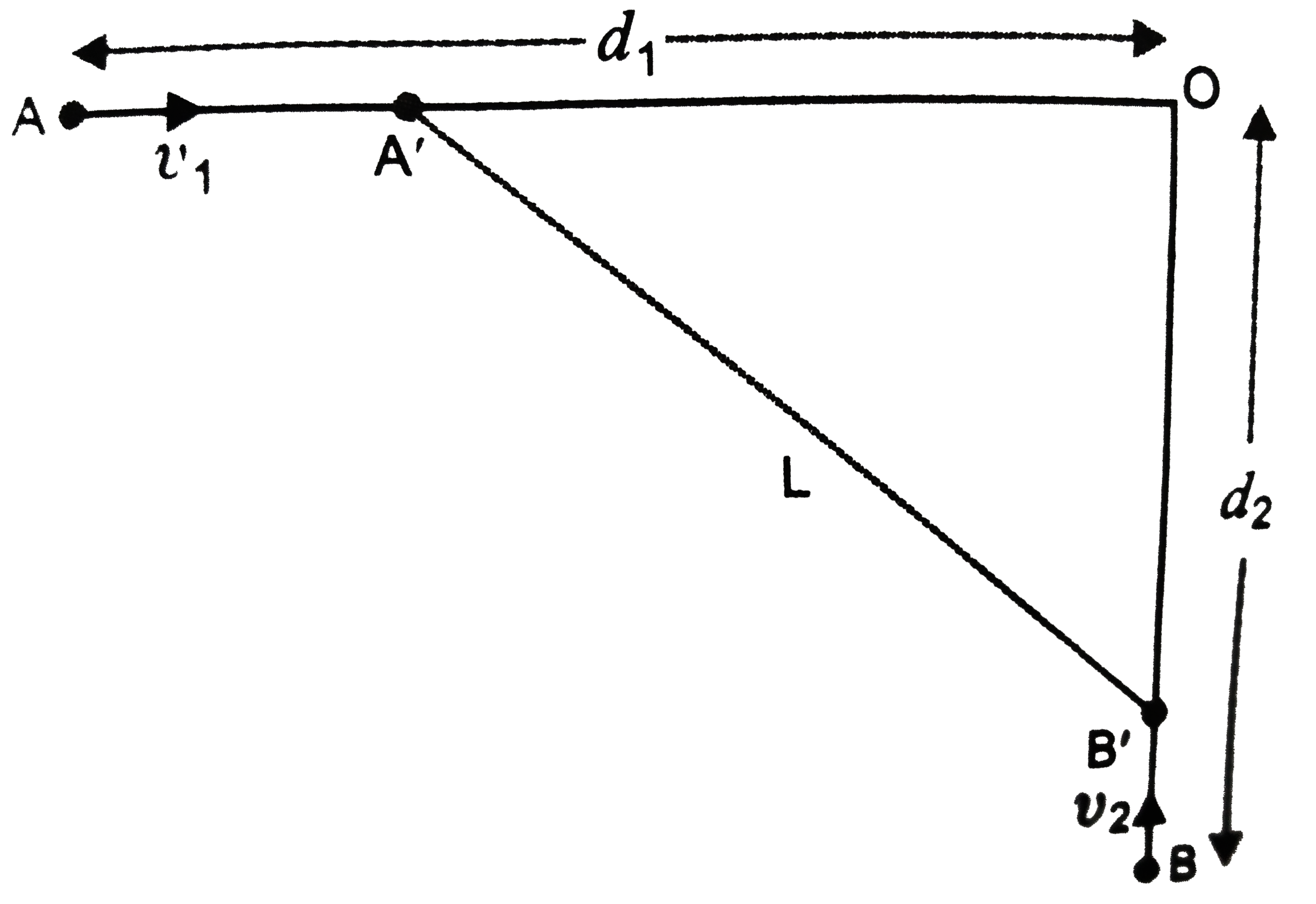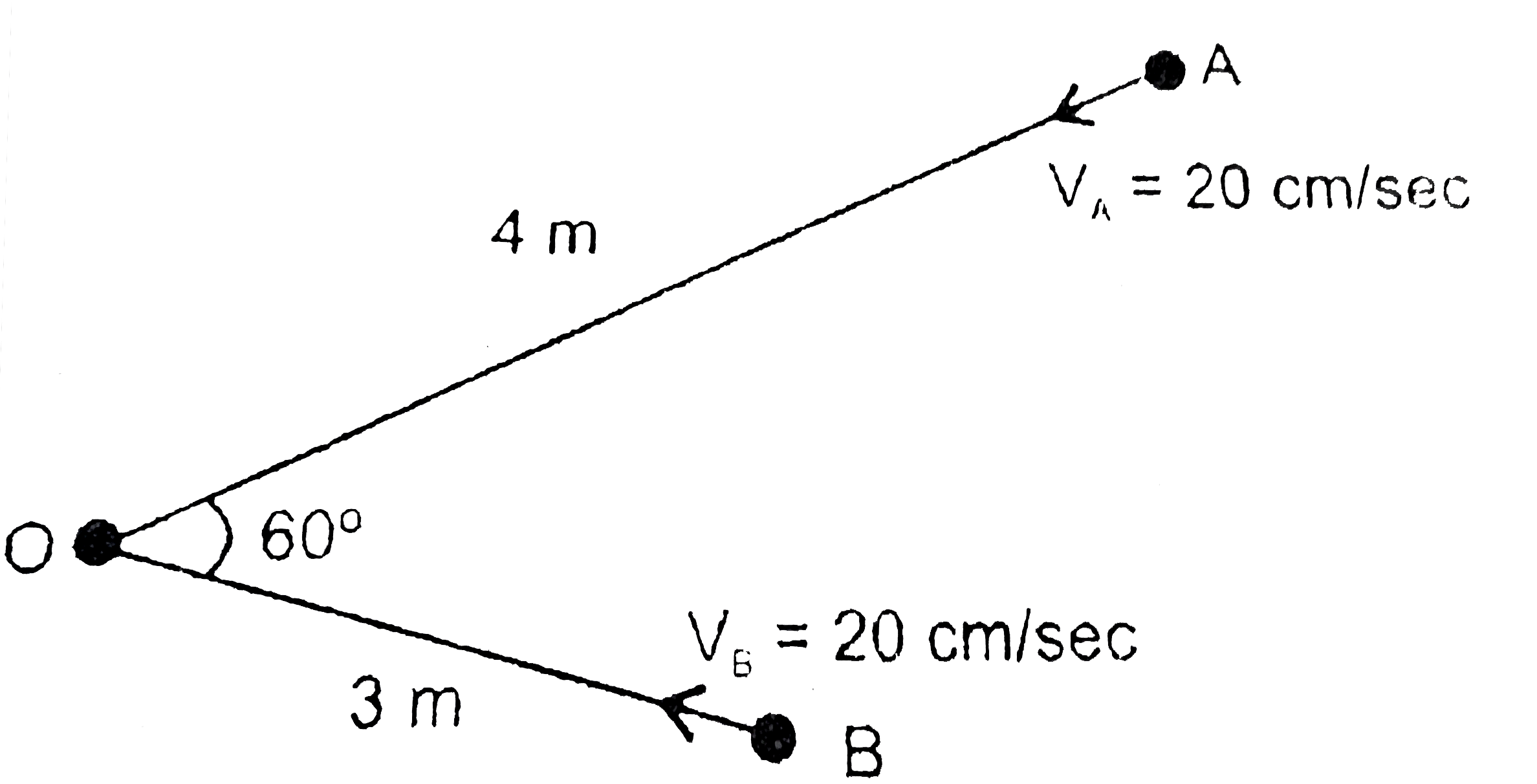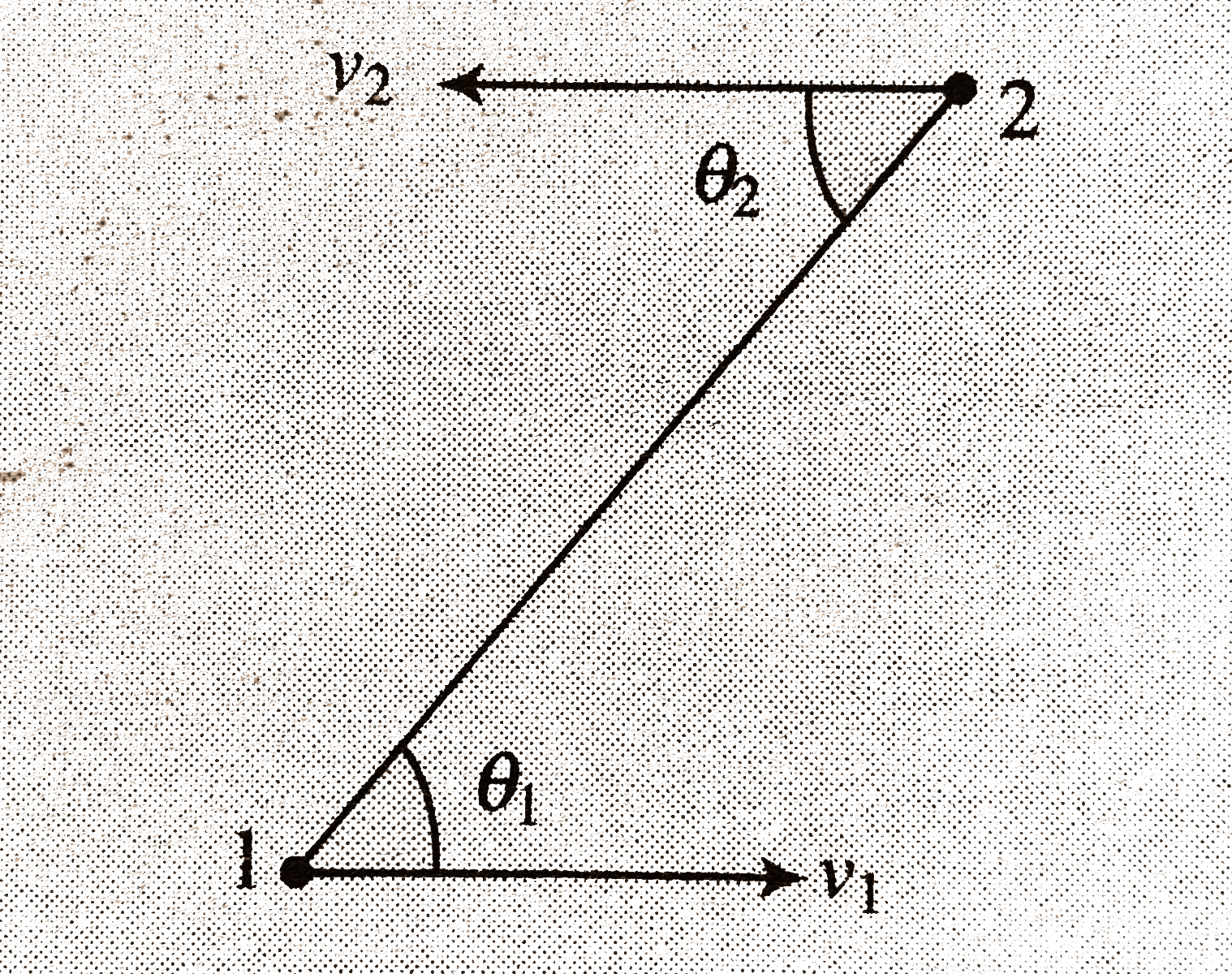Two particles, 1 and 2, move with constant velocities v1 and v2 along two mutually perpendicular straight lines toward the intersection point O. At the moment t=0 the particles were located at the distances l1 and l2 from the point O. How soon will the distance between the particles become the smallest? What is it equal to?
Let particles (A) and (B) reach at (A') and (B') after time (t).<br>thus OA'= v_1 t and BB' =v_2 t<br>So, AA' = (d_1 -v_1 t) and OB' = (d_2 -v_2 t),
IfA'B'=L, then L^2(d1−v1)2+(d2−v2t)2 …(i)
Dfferentiating it w.r.t. time get
2LdLdt=2(d1−v1t)(−v1)+2(d2−v2t)(−v2)
For (L) to be minimum, dLdt0=0
:. 0=- (d_1 v_1 -v_1^2 t) - 2 9d_2 v_2 - v_2^2 t0<br>or (v_1^2 _ v_2^2 ) t=d_1 v-1 + d_2 v_2 or t=d1v1+d2v2(v21+v22)
Putting this value of (t) in (i). and simplifyng it, we get,
Lmin0=d1v2−d2v1√v−12+v22
 .
.
Topper's Solved these Questions
- BOOK - PRADEEPCHAPTER - KINEMATICSEXERCISE - Value based5videos
KINEMATICS
- BOOK - PRADEEPCHAPTER - KINEMATICSEXERCISE - 1 Problems for practice25videos
KINEMATICS
- BOOK - PRADEEPCHAPTER - KINEMATICSEXERCISE - Motion25videos
KINEMATICS
- BOOK - PRADEEPCHAPTER - GRAVIATIONEXERCISE - Assertion-Reason Type Questions19videos
GRAVIATION
- BOOK - PRADEEPCHAPTER - LAWS OF MOTIONEXERCISE - Assertion- Reason Type Questions17videos
LAWS OF MOTION
Similar Questions
Two ships, 1 and 2, move with constant velocities 3 m/s and 4 m/s along two mutually perpendicular straight tracks toward the intersection point O. At the moment t=0 the ships were located at the distances 120 m and 200 m from the point O. How soon will the distance between the ships become the shortest and what is it equal to ?
View SolutionTwo particles A and B move with constant velocities v1 and v2 along two mutually perpendicular strainght lines. Towards the intersection point O. At moment t=0 the particle were located at distance l1 and l2 from O respectively. Find the time when they are nearest and also this shortest distance
View Solution
Knowledge Check
- Question 1 - Select One
Two ships, V and W, move with constant velocities 2ms−1 and 4ms−1 along two mutually perpendicular straight tracks toward the intersection point O. At the moment t=0, the ships V & W were located at distances 100m and 200m respectively from the point O.
The distance between them at time t is :-Aa2y+bx2=0Ba2y=bx2Cy=ba2xDay2=b2x - Question 2 - Select One
Two ships, V and W, move with constant velocities 2ms−1 and 4ms−1 along two mutually perpendicular straight tracks toward the intersection point O. At the moment t=0, the ships V & W were located at distances 100m and 200m respectively from the point O.
The distance between them will be shortest at t= ........A2bˆjBaˆjC(a−2b)ˆiDNone of these - Question 3 - Select One
Two particles move with constant velocities towards point O along straight lines in a plane as shown. The shortest distance A and B is
 A50√3cmB300cmC100√3cmD200cm
A50√3cmB300cmC100√3cmD200cm
Two particles, 1 and 2, move with constant velocities v1 and v2. At the initial moment their radius vectors are equal to r1 and r2. How must these four vectors be interrelated for the particles to collide?
View SolutionTwo particles 1and2 move with velocities →v1 and →v2 making the angles θ1andθ2 with the line joining them, respectively. Find angular velocity of relative→1.
 .View Solution
.View SolutionTwo particle A and B, move with constant velocities →v1and→v2. At the initial moment their position vectors are →r1 and →r2 respectively . The condition for particles A and B for their collision is
View SolutionA particle move with velocity v1 for time t1andv2 for time t2 along a straight line. The magntidue of its average acceleration is
View SolutionTwo particles are moving along two long straight lines, in the same plane with same speed equal to 20cm/s. The angle between the two linse is 60∘ and their intersection point isO. At a certain moment, the two particles are located at distances 3m and 4m from O and are moving twowards O. Subsequently, the shortest distance between them will be
View Solution

